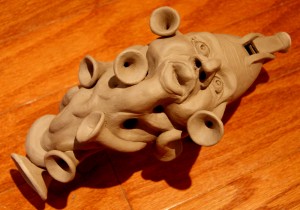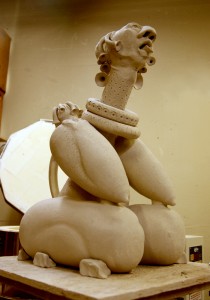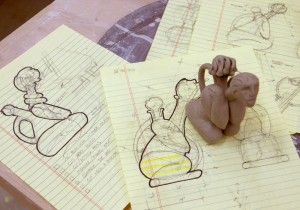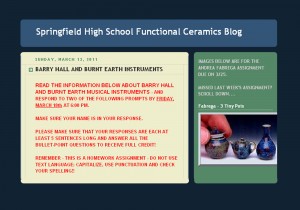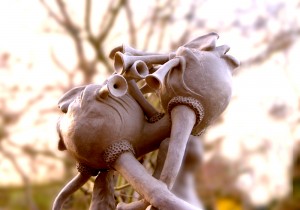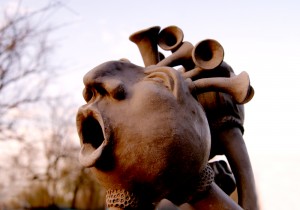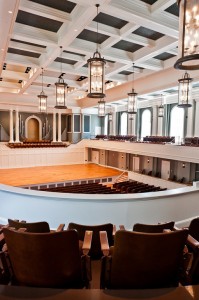 Two events of the last day or so inspired me. One of those events was viewing the YouTube video that you see at the bottom this post. The video clip displays an udu-lamellophone performance. It is an unusual combination for ceramic musical instruments and it isn’t completely unique, but it is interesting that my sketches of a more complex instrument of the same combination never came to reality because I couldn’t imagine anyone being particularly interested in such an oddity. Certainly, the market is a narrow niche, but it does re-affirm that there are people who seek out unusual instruments to play and enjoy. This inspiration is one of the kick-in-the pants variety.
Two events of the last day or so inspired me. One of those events was viewing the YouTube video that you see at the bottom this post. The video clip displays an udu-lamellophone performance. It is an unusual combination for ceramic musical instruments and it isn’t completely unique, but it is interesting that my sketches of a more complex instrument of the same combination never came to reality because I couldn’t imagine anyone being particularly interested in such an oddity. Certainly, the market is a narrow niche, but it does re-affirm that there are people who seek out unusual instruments to play and enjoy. This inspiration is one of the kick-in-the pants variety.
The second event happened last night. Deb and I attended the grand opening of Belmont University’s McAfee Concert Hall. There are hardly adequate words to describe the amazing acoustical qualities of the space and the performances. Belmont’s music faculty and students deliver excellence consistently and last night was no exception. The chill bumps kept popping up on my arms all evening long. If my musician-dad had been there, it would have taken a seat belt to restrain his elation .
There was one thing said at the grand opening that hit very close to home…and I wish I could remember who made the remarks. In describing the architectural treatments and the intentionality of how music would be affected by the space, the speaker said something about the architect-musician becoming one. Both the architect and the musician build, if you think about it. And the fruits of the musician and architect have an impact on the people touched by their work. I needed to be reminded of that. The architect and musician parts of me, even if shelved as part of my past, resonated a bit when those words were spoken. As I wrote at the first if this post, I was inspired…and caught off guard when it happened.
